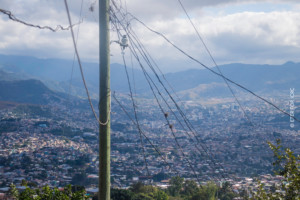The work CartONG does is invaluable. For this issue, it has produced a map and a chart to measure India’s vulnerability to extreme climate events and the involvement of its national actors. Beyond India, this issue was at the heart of the GeOnG, whose eighth edition was held from 24 to 26 October 2022 on the theme of “‘Do no harm’ in the era of environmental emergency: revisiting Information Management in the aid sector”. Humanitarian Alternatives was a partner to this event.
Just like its neighbours Pakistan and Bangladesh, recently impacted by floods of unprecedented magnitude, India is regularly struck by extreme climatic events that take a major toll on its population (deaths, severe socio-economic consequences, etc.). While the map clearly shows the magnitude of the risks throughout the country as a whole, the following graph illustrates impacts upon the population according to event type (climatic and seismic). One can see that most of the risks are associated with recurring events, such as seasonal droughts, and floods. The considerable number of people affected is undeniably the result of the extreme nature of these events, itself a direct consequence of climate change. On a broader level, between 1950 and 2015,[1]Graham Simpkins, “Extreme rain in India”, Nature Climate Change, vol.7, November 2017, p. 760, https://www.nature.com/articles/nclimate3429 extreme precipitation events in Central India have tripled, an increase directly related to the observed warming of the Arabian Sea.
Faced with the impact of these events, Indian humanitarian NGOs are increasing their presence in the field. The nature of their interventions is also evolving, no longer solely limited to extreme event response. Humanitarian projects and actions[2]Such as Seeds India’s and Caritas India’s interventions. now take into consideration the challenges of climate change, and include population-targeted actions designed to improve disaster preparedness and mitigation measures in order to face these risks.
Translated from the French by Naomi Walker


To find all the GeOnG 2022 debates: https://cartong.org/geong/2022




